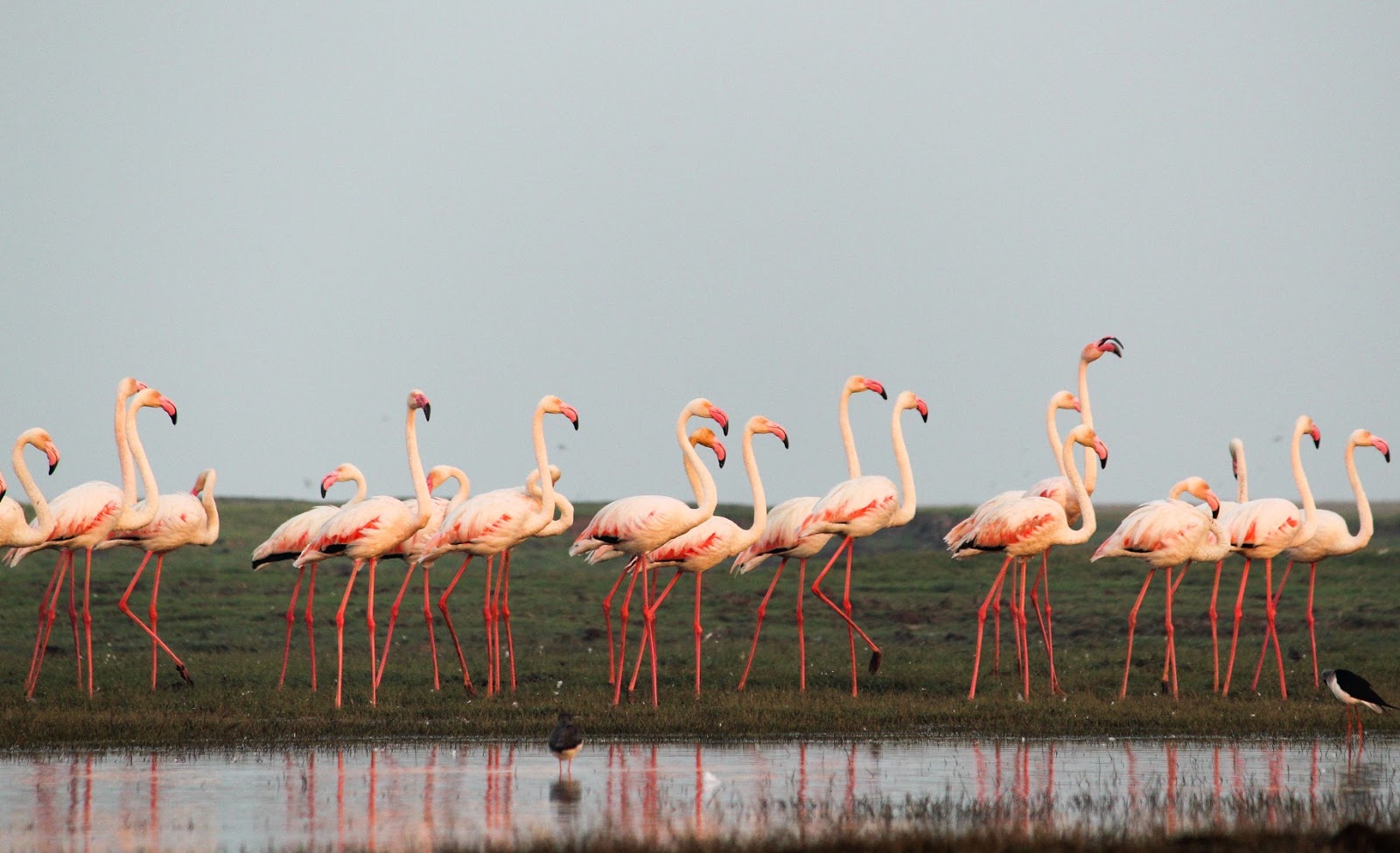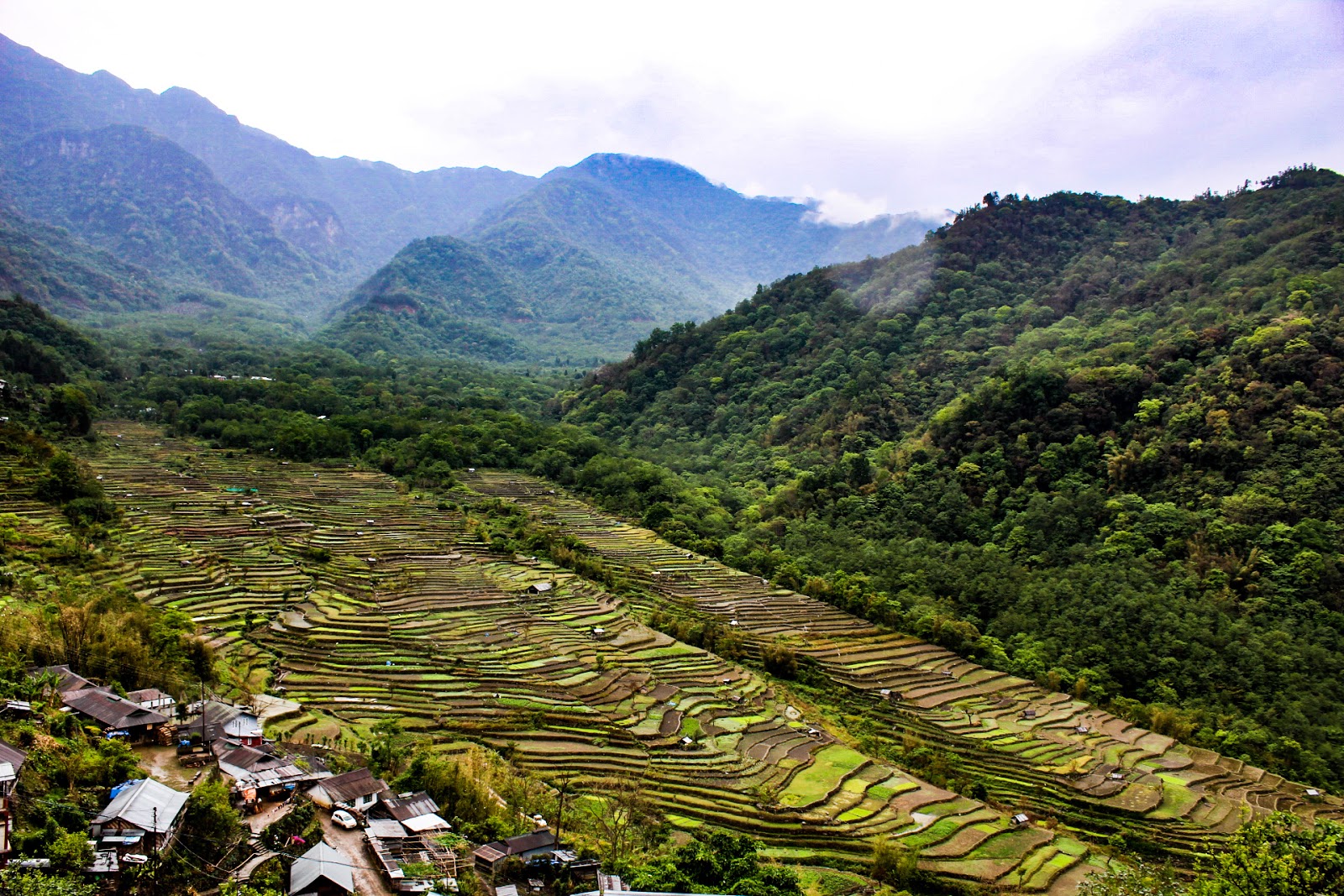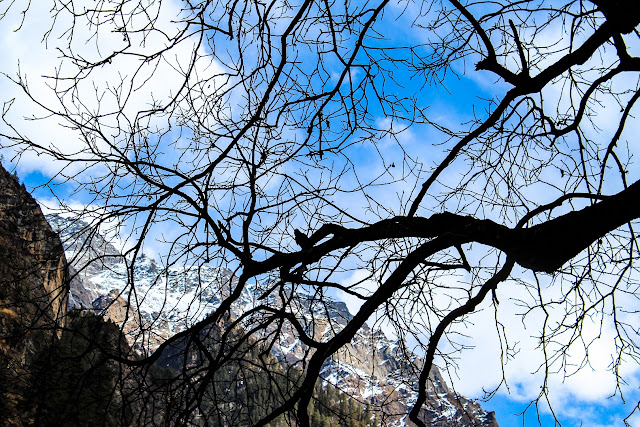
The orange orb slowly rose up
from the waters, first showing only its crown and then gradually growing into
the golden ball of fire that I was now admiring. I was still soaking in the beauty
of hundreds of Coots swimming in the chilly early morning waters, trying very
hard to resist the urge to jump in with them, when the Sun came out of nowhere
and stole the show. I forgot all about the Coots and the urge to jump in, in a
matter of seconds. Just as I was thinking “This can’t get any more beautiful”,
the boatman did a quick maneuver and positioned the boat in front of a group of
Flamingos, with their pinkish hue accentuated by the water glistening with reddish
orange light, with the Sun in the backdrop. Thus started my day of birding at
the Khumbargaon bird sanctuary in Bhigwan, near Pune.

I never stopped looking. The only
reason the above scene disappeared from my sight was because, the boatman (who
also acted as a guide) slowly steered away from it to other parts of the reservoir. And
he did rightly so, because the reservoir is HUGE and has a lot more to offer.
We were just getting started.
We slowly drifted through the
waters along with numerous birds that were going through their morning
routine. There were numerous others at the shores as well, each busy finding its
morning food. Occasionally a Seagull zipping past above us would drop down to the
water to get hold of a fish with laser sharp precision, and quickly soar back
up again in a second. Unfortunately I’m only human and I could not move fast enough
to capture the sight on my camera. So I did what I could, which was, to gape at
it and wonder, “How the heck did you do that!”. I closed my mouth only when I
was distracted by the boatman pointing me to a flock of Glossy Ibis flying at a
distance.

As we continued to move further
in, I saw quite a few other varieties of birds - Spot-Billed Duck, Garganey,
Shoveler, Cormorant to name a few. I saw so many in so much little time that I
was left scrambling to remember their names as my guide went about naming them
with ease. Thankfully I brought along a book of birds commonly spotted in the
area, that helped me to quickly identify features and map their names. If you
are a newbie like me going here, be sure to get a copy before heading into the
waters.

Awkward. If I have to choose
just one single word to describe Flamingos, that would be it. Yeah well, if I
could choose two words, I’d say ‘adorably awkward’. With their huge frame on slender,
long legs, they might look awkward but at the same time beautiful and adorable.
If you see one anywhere, make sure to stay put till it takes off, spreading out
its pink wings - a sight to behold. Taking off from water, it looked almost as if it was walking on
water. I have to admit, just watching them laze around de-stressed me.

After wandering around in the water for a total of four hours, I reached the shore and stuffed my hungry self with exactly what the birds were eating, except, my fishes were cooked!
P.S: The birds that I’ve mentioned here is only a small subset of what is present at the sanctuary. I have published a full list of what I saw here.
P.S: The birds that I’ve mentioned here is only a small subset of what is present at the sanctuary. I have published a full list of what I saw here.

































